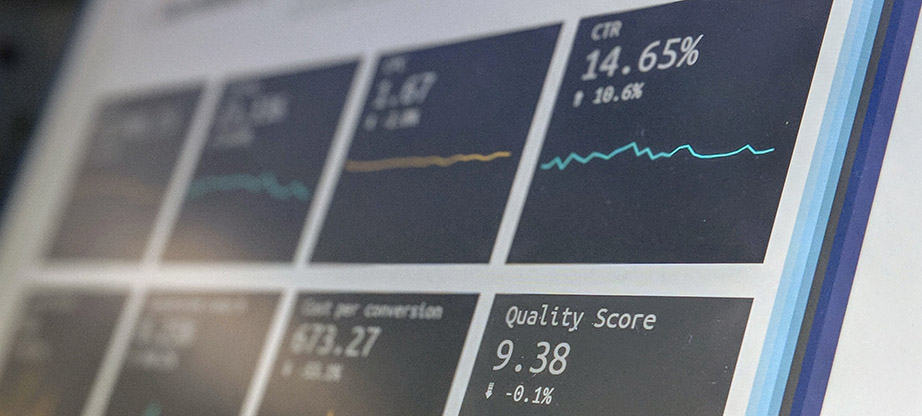Trading in the Digital Era: Security Takes Precedent over Design
Online trading can be lucrative. It can also be fraught with risk. Beginners who want to learn how to trade online often focus on the money that they could earn without having a realistic understanding of what they might be putting on the line. As with all things, education is key before considering any type of investment.
You should never make a trading decision without having some kind of trading strategy, which gives you in-depth information. This guide will serve as a basic reference to give a beginner trader an overview of what they need to go through the process. We will discuss the types of stock trades that are available, the stock selection process, commissions, expenses, and hidden fees.
How to Trade Online – Choose a Broker
Online brokers are the ideal option for do-it-yourself investors who want to learn how to trade online because they allow beginners to manage their own portfolio as opposed to paying someone else to do it for them. This allows investors to buy and sell stocks using their own assets online without paying costly commissions to money managers. There are numerous online brokers. The key is finding the right broker for you.
Do Your Research
Thankfully, there is a ton of information available about financial markets. Online brokers may offer market research for free. The quality of the research varies. Experienced investors use third-party researchers. New investors may rely heavily on their broker. So researching your broker’s experience in advance is the key to success.
Understand All Fees
Investing is money. The more money that you lose paying an online broker, the less money you have to invest. Thankfully, online brokers are in a pricing war. Some online brokers offer different tiers of service, which will affect the fees you pay. Be on the lookout for hidden fees, including account transfer fees and inactivity fees.
Know Your Asset Classes
If you’re looking for stocks, mutual funds, bonds, and ETFs, you will be happy with a standard broker. If you’re looking to go outside of the traditional and want access to currency exchanges, cryptocurrencies, OTC listed stocks or futures trading, you will want someone who is experienced working outside of the core asset classes of stocks. Again, look at the brokerage fees, as many brokers charge additional fees for unusual investments.
Look for an Easy to Use Mobile App
If you are like most investors, you want instant access to your investment information. This means using a broker who offers an easy to use mobile app. This will allow you to engage in trading while taking the bus to work, during lunch, etc. It will also give you access to the latest market news on the go.
Check the Reviews
As with any product you purchase online, the reviews can be your best source of information to find out about the quality of the service a potential broker offers. Remember, every broker’s website is going to make its offerings sound amazing. However, only real customers can give unbiased accounts based on their hands-on experience with the product.
What Types of Trades Can You Place with a Stockbroker?
After you’ve done your due diligence and you’ve chosen an online broker, you’re going to want to start investing. Before you can do that, you need to learn the types of trades you can place. Part of learning how to trade online is understanding what these basic types of trades mean. Each trade type has a unique and possibly expensive impact on your investment. Here are examples of a few of them.
- Stock Market- A market order is purchasing a stock at its current price. You buy 100 shares of Apple for a market price of $200 and you will pay $20,000 plus your broker’s commission.
- Limit- This allows you to limit the max or minimum price you will except if you buy or sell a stock. Apple stock is selling for $200 a share. You say that you want to purchase 100 shares of Apple if and when the price drops to $190 per share.
- All or None- Brokers typically will space the purchasing of stock for customers who are purchasing a substantial amount of one company stock over the course of a few hours, days, or even weeks based on opportunity. There are times when you want to place an order at a single price. “All or None,” tell your broker that you do not want your trade to be executed unless the entire trade can take place in one transaction.
- Stop and Stop Limit- A stop order instantly becomes a market order when a preset price is reached. This is the stop price. A stop-limit order instantly turns the order into a limit order as opposed to a market order once the stop price has been reached.
Other Trades
Other types of trades you can place with your online broker include.
- Sell short and buy to cover- Runs the risk of potentially unlimited losses
- Day and GTC and extended hours trading- These orders expire at the end of the set trading time frame
- Trailing stop- allows you to lock in profits while offering the potential of benefiting from increased stock prices
- Bracketed orders- Similar to trailing stop orders. The difference is that they require upper limit trigger prices.
How to Trade Online – Learn How to Research Stocks
Hearing someone say that you should research stocks sounds all in good. However, if you are new to investing, being told to research stocks could be the same as telling a non-Chinese speaker to research information in ancient Chinese manuscripts.
How to Trade Online – Stock Research Material
First, we recommend that you get stock research material. If you are considering a particular company, look at the company’s financials. This is referred to as quantitative research. You can do this by getting certain documents offered by the US Securities and Exchange Commission. These would include the form 10 – K and form 10 – Q. Many brokerage sites and major financial news websites have the highlights from these two forms for just about any company you are looking at investing in.
Focusing on Important Information
Second, when learning how to trade online, you need to learn to weed through the information that’s not important to you at the time. A few things that you should focus on would include:
Revenue
This term is used to describe the amount of money a company earns in a set period of time. When you look at an income statement, it’s going to be the very first thing you see. On many reports, you will see revenue broken down into operating revenue and non-operating revenue. Pay special attention to operating revenue. This is the money that a business garners from their standard or core business. Non-operating revenue comes from one time deals, such as selling a piece of real estate.
Net Income
This is referred to as a “bottom line” figure. This is the amount of money the company made once all of its operating expenses, depreciation, taxes, etc. are removed from the revenue. Remember, revenue is the gross salary. You could compare this to the paycheck you get from your employer every two weeks. Net income is what you would have leftover after you have paid your taxes and your living expenses.
Earnings per Share
This is a figure that you want to pay special attention to. This takes the earnings of the business and then divides it by the number of shares that are available to trade. This helps you visualize the profitability of a company per share. It makes it easier for you to compare one company with another. However, we don’t consider this to be a perfect way to evaluate the financial health of a business because it doesn’t tell you how efficiently a company makes use of its capital.
Return on Equity or Return on an Asset
ROE gives you a percentage figure that you can use to determine the amount of profit a company generates based on each dollar shareholders have invested. ROA shows you how much money, in percentages, a company generates with each dollar of its own assets. Here you will need to use a little bit of caution. Companies can artificially boost these numbers by buying back shares or reducing the shareholder equity denominator.
Paying Attention Qualitative Research
Third, look at qualitative research. Quantitative research is the type of research we have mention above regarding looking at the numbers. This is a black-and-white view of a potential stock’s value. Qualitative has been compared to Technicolor in that it gives you a broader picture of the prospects and operations of a company.
With this in mind, some experienced investors have been known to encourage newer investors to purchase a company because it’s something that they want to own, not just because they want to see the stock go up. Quantitative research numbers and qualitative research is more intuitive. Some questions that you would ask during the qualitative research phase may include.
Where Does the Company Get Its Money from?
At times, the answer to this question is clear-cut. For example, a screwdriver company gets its money from selling screwdrivers. However, in other instances, it’s not clear-cut. Some of the best known fast food companies on the planet make the majority of their revenue via real estate and selling franchises.
How Does the Company Maintain a Competitive Edge?
Here’s where you have to look at the company and identify what it is about the company that makes it unique. What do they have that other people can’t copy, do as well, or do better? Maybe they own the patent to a revolutionary device. Maybe they have unparalleled distribution capabilities. The harder it is for competitors to copy or outdo a company, the better its competitive advantage.
What Type of Management Does it Have?
A company is only going to be as successful as those who are out in front. You can get a feel for the company by looking at its conference calls and annual reports. Take the time to research a company’s Board of Directors. Think long and hard before investing in a company that has too many insiders. You want a company that has innovative thinkers that can spur growth.
What is the Worst-Case Scenario?
We are not focusing on short-term developments that can affect the company’s stock price. We are thinking of long-term fundamental changes that will impede a company’s ability to grow over the next few years. These are “what if” scenarios. For example, when we were discussing the company’s competitive edge, we said that one competitive edge is having a patent on a product. What happens when a patent expires? What will happen to the value of the stock then? Or what if the CEO dies and their successor does not have the same vision as the current CEO?
Finally, you need to take all of your research and put into context. Doing this will give you a view of a company’s general financial health. You will be able to identify its current value and use this to determine the intrinsic value of its stock. Remember, when you are first learning how to trade online, it’s easy to take a short term view of a company. However, in most scenarios, you want to understand the value of a company over the long haul.
How to Trade Online – Make a Sound Plan and Stick to It
Investing is an emotional roller coaster, especially for people who are just starting out. Losing money can lead to panic. It’s also easy for emotion to cause a person to get overly excited and buy a stock that feels like it is winning. Both of these emotional responses can lead to failure.
This is why it is important for you to know in advance how much you want to invest and what price you are willing to invest at. You have to know how much are you willing to lose before you let the stock go. It’s important that you familiarize yourself with the different types of trade orders. This can help you make a plan, stick to your plan, and avoid making reactions based on emotion.
The truth of the matter is that a person does not need to learn how to trade online in order to save for retirement. However, if you save money early and then you take your investments and place them in a diversified portfolio that takes into consideration your age and your risk, you stand a decent chance of retiring well. When you start trading, start slow. Build up your knowledge first. Familiarize yourself with potential risk, thereby increasing your chances of being successful.
As always, we love to hear from our readers. What advice do you have for those who want to learn how to trade online? Let us know in the comments section below.







